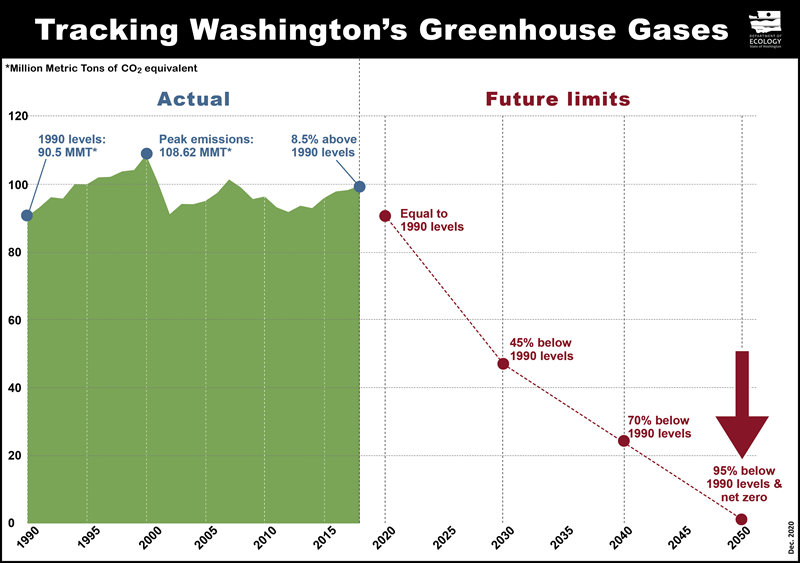
A little over a year ago, Gov. Jay Inslee directed the Department of Ecology to develop regulations to guide greenhouse gas assessments for major projects in Washington.
Under Washington law, permitting agencies have long been required to comprehensively analyze environmental impacts that would be caused by new projects. How that requirement applied to climate change has not always been clear, however.
Courts have found that climate change poses a serious threat to Washington’s people and environment, and that the greenhouse gases that are causing climate change are an environmental impact that needs to be evaluated and mitigated. There have not been clear guidelines on how to measure those emissions and what kind of mitigation is necessary, though. To address this, Gov. Inslee instructed Ecology to identify methods to comprehensively and consistently include greenhouse gases in environmental reviews for major fossil fuel and industrial projects.
A map of facility greenhouse gas emissions in Washington.
Once finalized, the greenhouse gas regulations won’t by themselves decide whether a particular project should be approved, but developing a consistent approach to analyze emissions will ensure that governments, residents, and companies are all looking at a common scorecard and understand the criteria used to create it.
Details
- The GAP rule would apply to projects that require review under the State Environmental Policy Act (SEPA), including new public or private facilities, or changes to an existing facility.
- The rule would be limited to projects that could emit about 10,000 metric tons of carbon dioxide equivalent or more per year from fossil fuels, biofuels, biomass, hydrocarbons, alcohols, industrial processes, and electricity use.
- The rule would not apply to planning reviews, housing developments, highway, road, or passenger rail projects, or projects that have already completed an environmental review.
- Applicable projects would be required to provide an estimate of their potential greenhouse gas emissions using the environmental assessment methods described in the rule. These methods require the use of best available science and current data.
The environmental assessment would include:
- Greenhouse gas analysis of on-site, upstream, and downstream emissions from the project
- A life cycle analysis of the facility, its inputs or feedstocks, and its outputs or products
- Analysis of how the project could change energy flows or uses
Remaining questions
Although the framework addresses many of the major components for the final regulations, we're still seeking public input on mitigation requirements in the regulations.
This includes what elements should be required to be in a mitigation plan, and what types of emissions need to be included (such as emissions from extracting and transporting natural gas, or from shipping a product out of state).
We're also asking how mitigation for emissions from projects that support decarbonization should be considered. For example, should the amount of mitigation for such projects be decreased based on the projects’ contribution to a future decarbonized economy?
Next steps
We plan to formally propose a rule this spring, which will be followed by a public comment period and hearing, and then to adopt final regulations later this year.
More information
- Read the framework GAP rule
- The informal comment period for the rule framework and draft documents is open March 2- 30, 2021.
- Submit comments online.
- Or by email at: gap-rule@ecy.wa.gov.
Information about the GAP rule is available at: www.ecology.wa.gov/gap-rule


